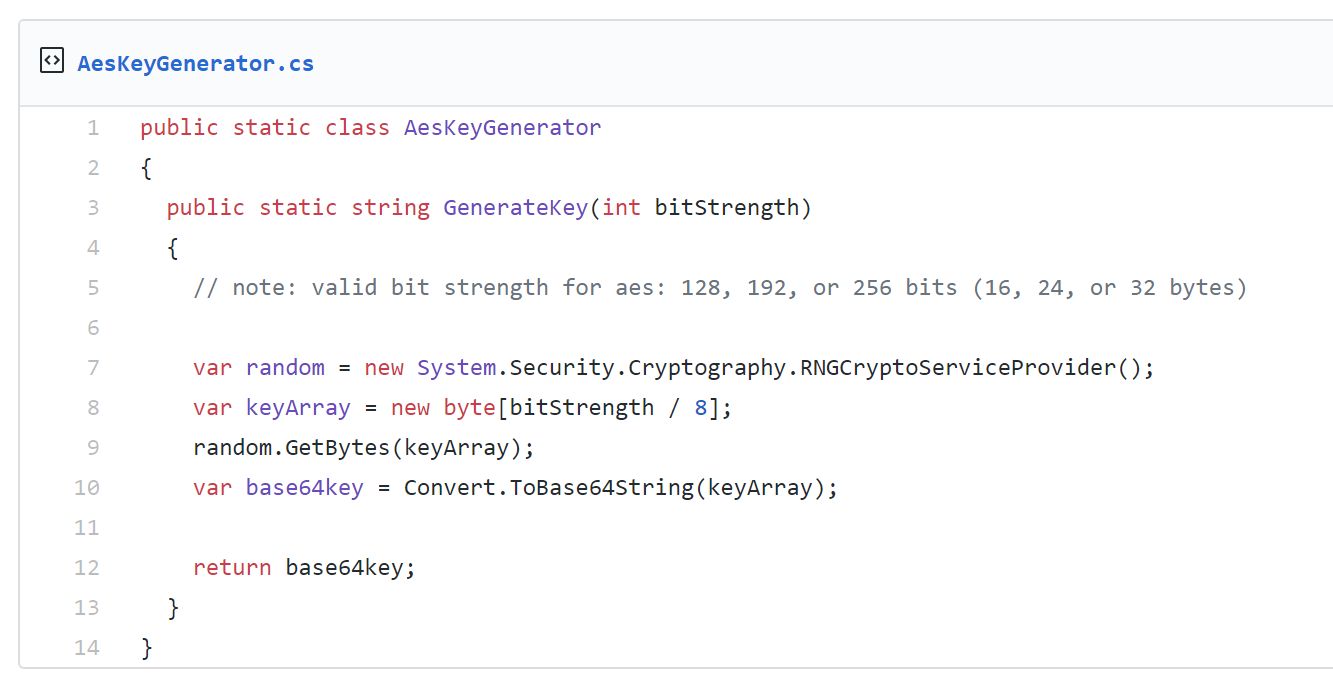32 Byte Encryption Key Generator
 -->
-->Creating and managing keys is an important part of the cryptographic process. Symmetric algorithms require the creation of a key and an initialization vector (IV). The key must be kept secret from anyone who should not decrypt your data. The IV does not have to be secret, but should be changed for each session. Asymmetric algorithms require the creation of a public key and a private key. 64 bit wep key generator. The public key can be made public to anyone, while the private key must known only by the party who will decrypt the data encrypted with the public key. This section describes how to generate and manage keys for both symmetric and asymmetric algorithms.
An AES key is just some random bytes, of 16, 24 or 32 bytes length - depending of key size, and can in principle be stored in the file system as an binary file. However I do recommend that you put it in a Java Key Store, and protect it by password. You can use the java keytool to do all of this, like this. The all-in-one ultimate online toolbox that generates all kind of keys! Every coder needs All Keys Generator in its favorites! It is provided for free and only supported by ads and donations.
The all-in-one ultimate online toolbox that generates all kind of keys! Every coder needs All Keys Generator in its favorites! It is provided for free and only supported by ads and donations. WEP Key Generator. To generate a random WEP key, select the bit key length to generate and press the corresponding button; the ASCII or HEX key can then be copied to your clipboard manually or via the copy to clipboard button to the right of the generated key text field. You can also generate a custom WEP key based on your own pass phrase or other input. Secure method for encrypting 32 byte private keys. Ask Question Asked 4 years, 5 months ago. So if the client-side encrypted a private key with a particular encryption key and only retained the encryption key, the server cannot forge a combination of IV, authentication tag and ciphertext which would be decryptable using the same key. System.Runtime.InteropServices.ComVisible(true) public abstract class MD5: System.Security.Cryptography.HashAlgorithm The following code example computes the MD5 hash value of a string and returns the hash as a 32-character, hexadecimal-formatted.
Symmetric Keys
The symmetric encryption classes supplied by the .NET Framework require a key and a new initialization vector (IV) to encrypt and decrypt data. Whenever you create a new instance of one of the managed symmetric cryptographic classes using the parameterless constructor, a new key and IV are automatically created. Anyone that you allow to decrypt your data must possess the same key and IV and use the same algorithm. Generally, a new key and IV should be created for every session, and neither the key nor IV should be stored for use in a later session.
To communicate a symmetric key and IV to a remote party, you would usually encrypt the symmetric key by using asymmetric encryption. Sending the key across an insecure network without encrypting it is unsafe, because anyone who intercepts the key and IV can then decrypt your data. For more information about exchanging data by using encryption, see Creating a Cryptographic Scheme.
The following example shows the creation of a new instance of the TripleDESCryptoServiceProvider class that implements the TripleDES algorithm.
When the previous code is executed, a new key and IV are generated and placed in the Key and IV properties, respectively.
Sometimes you might need to generate multiple keys. In this situation, you can create a new instance of a class that implements a symmetric algorithm and then create a new key and IV by calling the GenerateKey and GenerateIV methods. The following code example illustrates how to create new keys and IVs after a new instance of the symmetric cryptographic class has been made.
When the previous code is executed, a key and IV are generated when the new instance of TripleDESCryptoServiceProvider is made. Another key and IV are created when the GenerateKey and GenerateIV methods are called.
Asymmetric Keys
The .NET Framework provides the RSACryptoServiceProvider and DSACryptoServiceProvider classes for asymmetric encryption. These classes create a public/private key pair when you use the parameterless constructor to create a new instance. Asymmetric keys can be either stored for use in multiple sessions or generated for one session only. While the public key can be made generally available, the private key should be closely guarded.
A public/private key pair is generated whenever a new instance of an asymmetric algorithm class is created. After a new instance of the class is created, the key information can be extracted using one of two methods:
32 Byte Key Generator
The ToXmlString method, which returns an XML representation of the key information.
The ExportParameters method, which returns an RSAParameters structure that holds the key information.
Both methods accept a Boolean value that indicates whether to return only the public key information or to return both the public-key and the private-key information. An RSACryptoServiceProvider class can be initialized to the value of an RSAParameters structure by using the ImportParameters method.
Asymmetric private keys should never be stored verbatim or in plain text on the local computer. The you testament download mac. If you need to store a private key, you should use a key container. For more on how to store a private key in a key container, see How to: Store Asymmetric Keys in a Key Container.
Encryption Key Example
The following code example creates a new instance of the RSACryptoServiceProvider class, creating a public/private key pair, and saves the public key information to an RSAParameters structure.